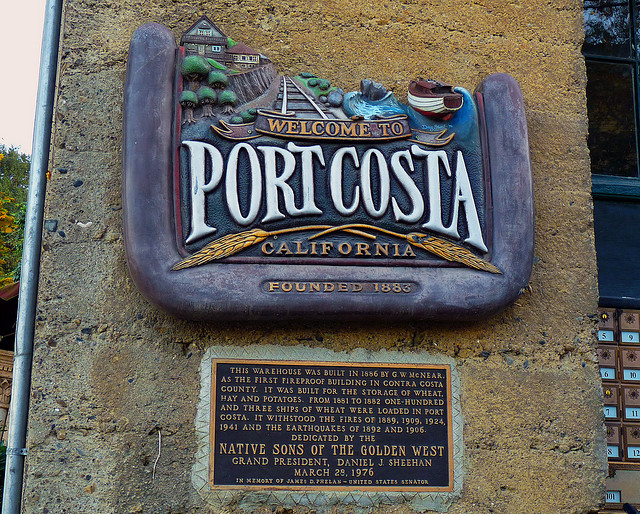
For as long as I can remember, and for reasons I can’t entirely explain, I’ve been in search of a place fully isolated from the rest of the world. I used to think that if peace was to be found on earth, it would be in a self-contained, out-of-the-way place with clear and uncontested boundaries.
One day, when I was 15, my mother was driving me to a baseball practice not far from where we lived in a suburb of Berkeley when we passed a sign to a place called Port Costa. “Jules,” she suddenly said. “Have you ever been to Port Costa?” I replied that I hadn’t. On the way home, when the sun was beginning to tumble west, she shot off Highway 4 onto an overpass that appeared to have barely survived the Loma Prieta earthquake.
“Where are we going?” I asked.
“To this ookie old town where a bunch of hippie burnouts live,” she said.
For my mother, a reserved Englishwoman, this was unusual behavior.
“Am I being kidnapped?” I asked.
She didn’t reply.
I recently realized that most of the time I’ve spent alone with either of my parents has been in the car. It has also been some of the most rewarding and quietly affectionate time we’ve had together. Fast-moving traffic seems to breed a just-you-and-me honesty that every family experiences in its best moments.
The road to Port Costa is among only a handful left in California on which you can drive on a Sunday afternoon without encountering a stream of oncoming traffic. It’s a sinuous two-lane highway flanked by scenery that showcases California’s signature beauty. Carving through the bald, muscular hills, you eventually dip into a shady valley and follow the only road that’s left to follow until you near the coast of the Carquinez Strait, a main tributary of the San Francisco Bay.
We rolled slowly down the main street of Port Costa. A man with long gray hair and a face so wrinkled with age that it seemed to be melting off walked past our car, led by an old limping dog. He wore beads, a straw hat with feathers, and Tevas. A glance our way turned into a stare directly at my eyes.
“See, look at these people,” my mom said, unbothered by the ogling. “It’s like this place never left the ’60s.”
The buildings and the people both seemed stuck in the past. The sole street in Port Costa is a stew of different architectural eras perfectly preserved for Hollywood; it’s a place where, in my next life, I could see myself making a movie.
At one end of town was an abandoned colonial-style schoolhouse. Half of its windows were boarded up, but a crisp American flag swayed atop a flagpole at the center of an empty playground. We drove slowly past large Victorian homes that were 20 years overdue for repainting. I saw no children. Actually, I saw no one under the age of 50.
At the end of the road was a wide dirt parking lot for the town’s only café, which is hemmed in by a wire fence. Just beyond the fence were train tracks crossing one end of what used to be a long dock.
My mother parked the car, and we sat in silence for a few minutes, taking in the scene. We got out, stretched our legs, and walked silently toward the water.
Port Costa was fascinating, if slightly menacing. I think that my mother, who emigrated from England in the 1960s and has admitted that very few places in America make her feel comfortable, wanted to show me a place she found inspiringly strange.
After a few minutes, a beat-up pick-up truck emerged from a hill behind us and began driving in slow circles. This was decidedly not friendly, and my mother mumbled something about being satisfied with having shown me Port Costa as she made her way briskly back to the car. We high-tailed it up the hill and left.
I later learned that Port Costa began as a 19th-century port town on the Carquinez Strait, connecting wheat sellers from the rural North Bay to cities like Berkeley and Oakland. By the end of the 20th century, however, the port was gone. Today, Port Costa has the passive desperation of the Eagles’ “Hotel California” and the quiet of an empty theater. Its inhabitants seem to be naturalist hippie types who never integrated back into society after trying acid. None of them, not even shop owners, seem interested in talking to you, even though they probably haven’t talked to anyone new in weeks.
Port Costa couldn’t be much less welcoming, but I’ve occasionally made my way back there all the same. I can’t say it’s charming, but it embodies a way of life so contrary to our time that it’s a wonder to encounter in the real world. Most places in America expect of their inhabitants a basic level of participation in civic life. Not so, Port Costa. This place is kind to hermits. It permits solitude. As for community, it seems to be limited to getting along in order to avoid killing one another.
By late afternoon, the town is dark, and it’s time to go home. Port Costa is in a steep valley, so the sun is gone by 4:30 in any season. Instead of being consumed by developers as the rest of California is, Port Costa is consumed by the shade.
Julian Moore is an intern at Zócalo Public Square.
*Photo courtesy of | El Caganer.




Send A Letter To the Editors